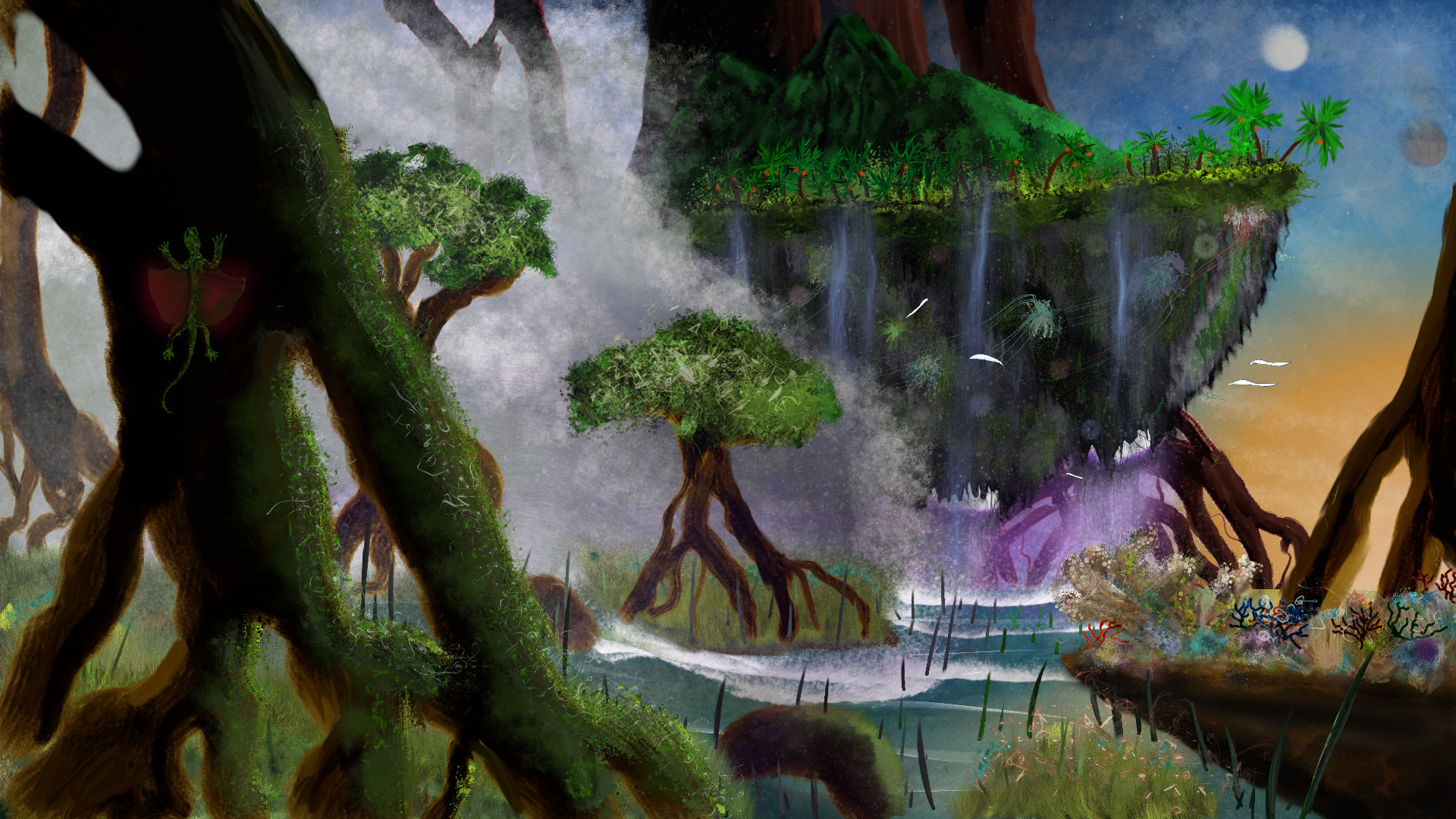Ayrlands are flying hunks of buoyant earth cradled in reef-rock shells, thrust heavenwards by ventral jets, and fueled by nature's own distilled elixirs. With every turning, the thousands of ayrles that swirl around Gahla’s axis paint the sky with ghostly streaks of radiant lingerlight. Shoved to and fro by the gales, they gracelessly skim across vast seas of clouds, and bob atop the cushions of dense aethereal gasses that spew down from their reefjet's scalding vents.
Building settlements on an ayrland requires an understanding of the complex network of elements that dictate the trajectory and balance of an ayrland’s habitat. The ecologist might wax expository about the three keystone habitats found on every ayrland - the reefcrusts, the underhollows, and the spann - complete with all the intricate taxonomic webs of flora and fauna that inhabit them. The meteorologist can point a pilgrim to a particular ayrland, or divine what resources might be unearthed from its geologic innards. The ayrchitect might lecture for days about the vital infrastructural networks required to keep a settlement sturdy and level in the face of punishing gales and troublesome skayrries.
On an ayrland, every tomorrow is balanced on the dagger's edge of Gahla's capricious whims. This would be a dangerous enough position notwithstanding their overeager schemes to rip ever more steel from the earth or fish from the clouds, to sacrifice ever more forests for fields, or to siphon ever more flux from beneath the reefcrusts.
Downward Spiral
Desert ayrlands are rare by definition, because an ayrland that cannot sustain growth will not produce enough energy to fuel its jets, and stay aloft. Ayrlands depend on their natural vitality to a feed a complex network of roots and veins within the soil, which converts vegetal and animal materia into flux . Thus, a barren biome might suggest that a once productive ayrland has only recently undergone a catastrophic change, and it is flying on a depleting reserve of fuel. This is why ayrlands featuring sandy dunes and barren rocky cliffs can often be found below the Whitesea , skipping and surfing atop the ocean. As they make their way southwards, the gales carve howling canyons through the mountains, and rivers of clouds slip through wind-blasted passes and hoodoos.
Descent below the clouds of the Whitesea is not the final stage of the decline, but certainly the beginning of a tumultuous process. Beneath the clouds, the spann will experience sporadic spurts of growth and lift due to the complicated interplay between increased rainfall, decreased sunshine, influxes of saltwater from ocean waves, and any number of disruptive effects that result from ayrlands flying above it. This can mean anything from aetherfalls that choke out the oxygen supply, falling rocks and urban detritus, or even the direct torching heat of a higher ayrland's reefjets.
Most dangerous of all are the heavy ash-laden clouds that emanate from volcanic spires of the Saltsea . While occasional ashfalls do wonders for soil fertility, they can wreak havoc on the ayrland's reefcrust. Once the reefs of an ayrland bleach, it and everyone on board is living on borrowed time.

